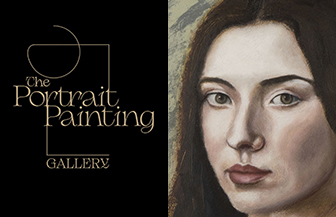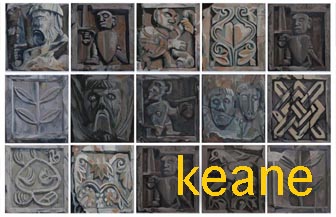IL 10 FEBBRAIO è la “giornata del ricordo”. Il ricordo della tragedia, tutta italiana, che colpì le zone di Trieste e dell’Istria dopo l’8 settembre 1943.
Una ricorrenza che spesso viene fatta passare in silenzio e dove le istituzioni locali, a stragrande maggioranza governate dal centro sinistra, non danno una rilevanza significativa a questo evento.
E questo stride con quanto invece viene fatto in occasione della “giornata della memoria” che ricorda la grande tragedia della Shoah.
Non voglio cadere nella trappola di coloro che, a seconda della parte politica di appartenenza, tendono a contrapposi sulla veridicità dell’una o dell’altra parte. Credo sia stupido, ma è palese che la storia delle foibe tende ad essere emarginata da una parte politica.
In certe occasioni, in discussioni di carattere culturale storico e politico, si ha l’impressione che le ferite della guerra civile che fu combattuta in Italia dopo l’8 settembre del 43, non si siano ancora chiuse.
Esse potranno guarire solo se tutti riconosceranno i propri errori e se tutti faranno un piccolo sforzo per cementare una memoria condivisa della nostra storia.
Oggi uno dei temi più drammatici che colpisce la nostra società è quello relativo alla violenza contro le donne, violenze di ogni tipo che purtroppo in molti casi sfociano anche nell’omicidio.
Per questo in occasione della giornata della memoria voglio ricordare uno degli episodi più cruenti di quel periodo che riguarda proprio una donna.
La trovarono supina, nuda, le esili braccia legate dal fil di ferro, entrambi i seni pugnalati, il volto pieno di lividi, il corpo sfregiato e un pezzo di legno conficcato nella vagina.
La trovarono a 136 metri di profondità in quelle strane costruzioni della natura che da quelle parti, in Istria, chiamavano Foibe. La trovarono il 10 dicembre 1943 i vigili del fuoco di Pola guidati dal maresciallo Arnaldo Harzarich. Ci misero poco a riconoscerla, tutti da quelle parti la conoscevano: era Norma Cossetto la bella ragazza che andava in giro in bicicletta per cercare informazioni per la sua tesi.
La formalità dell’identificazione da parte del parente fu uno strazio: a farlo fu lo zio che riconobbe sul suo corpo varie ferite d’arma da taglio e altrettanto riscontrò sui cadaveri degli altri.
Non c’era dubbio, i partigiani titini dell’Esercito Popolare di Liberazione della Jugoslavia avevano infierito sino alla fine. Doveva aver sofferto le pene dell’inferno… povera Norma!
Classe 1920, apparteneva a una nota famiglia di possidenti fascisti: il padre Giuseppe Cossetto era un dirigente locale del Partito Nazionale Fascista e aveva ricoperto anche l’incarico di commissario governativo delle Casse Rurali e podestà di Visinada. Nel 1943, all’epoca dei fatti, era ufficiale della Milizia Volontaria per la Sicurezza Nazionale e in seguito ai fatti dell’Armistizio dell’8
settembre fu trasferito presso il Comando della Milizia di Trieste. Anche lui come Norma fu ucciso e infoibato. Pochi giorni dopo.
Norma dopo essersi diplomata, brillantemente, nel 1939, presso il Regio Liceo Vittorio Emanuele II di Gorizia, si iscrisse all’Università di Padova. Poi, come avveniva a quel tempo, a partire dal 1941 alternò lo studio a supplenze scolastiche nei paesi di Pisino e Parenzo, mentre aveva deciso di aderire ai Gruppi Universitari Fascisti di Pola.
L’estate 1943 la passò a preparare la sua tesi di laurea che doveva intitolarsi “Istria Rossa” (riferita alla terra ricca di bauxite dell’Istria) seguita dal professor Arrigo Lorenzi. Nelle calde mattine e negli afosi pomeriggi girava per municipi e canoniche alla ricerca di archivi che le consentissero di sviluppare la sua tesi di laurea.
E proprio mentre viaggiava in bicicletta, un giorno, fu fermata e arrestata dai partigiani, era il 27 settembre. Per gran parte dell’estate tutto era scorso tranquillo anche se verso la fine dell’estate l’atmosfera iniziò a farsi pesante e dopo l’8 settembre, la famiglia, come molte altre, cominciò, ad avere minacce armate.
Ricorda la sorella Licia: “Ci hanno portato via tutto. Si sono presi anche le divise di papà, che in seguito hanno indossato cucendoci sopra la stella rossa!…Una volta hanno anche sparato in casa. La mamma era terrorizzata e anche noi ragazze. Tuttavia, Norma era un po’ più ottimista e sperava che tutto questo disordine anche morale si dissolvesse presto”.
Poi, il giorno prima dell’arresto, il 26 settembre 1943 un giovane partigiano di nome Giorgio si era recato a casa dei Cossetto convocando Norma al Comando partigiano nell’ex caserma dei Carabinieri di Visignano. Qui, era stata interrogata, e poi le era stato chiesto di entrare nel movimento partigiano. “No” era stata la sua risposta, secca, decisa. I partigiani guardandosi tra di loro glia avevano indicato l’uscita.
Norma fu arrestata insieme ad altri civili che avevano rifiutato di collaborare.
Furono confinati tutti nella ex caserma della Guardia di Finanza a Parenzo per essere poi trasferiti nella scuola di Antignana dove i partigiani si erano spostati per sentirsi più sicuri vista l’avanzata tedesca che avevano occupato Visinada.
Lì, in quella scuola trasformata in prigione, dove magari avrebbe potuto insegnare, fu divisa dagli altri prigionieri. Legata nuda ad un tavolo, fu seviziata e stuprata dai suoi carcerieri a turno, per diversi giorni.
La sorella Licia ricorda che dopo la morte di Norma una signora che volle restare anonima gli si avvicinò dicendogli, a bassa voce: “Signorina non le dico il mio nome, ma io quel pomeriggio, dalla mia casa che era vicina alla scuola, dalle imposte socchiuse, ho visto sua sorella legata ad un tavolo e delle belve abusare di lei; alla sera poi ho sentito anche i suoi lamenti: invocava la mamma e chiedeva acqua, ma non ho potuto fare niente, perché avevo paura anch’io”.
La notte tra il 4 e 5 ottobre Norma e gli altri prigionieri, legati col fil di ferro, furono costretti a spostarsi a piedi fino a Villa Surani. Qui, ancora vivi, furono gettati nella foiba lì vicina. Norma e le altre donne prima di essere uccise furono violentate, ancora una volta.
Sempre la sorella Licia, che fu anche lei arrestata e poi rilasciata, ricorda: “Ancora adesso la notte ho gli incubi, al ricordo di come l’abbiamo trovata: mani legate dietro alla schiena, tutto aperto sul seno il golfino di lana tirolese comperatoci da papà la volta che ci aveva portate sulle Dolomiti, tutti i vestiti tirati sopra all’addome…. Solo il viso mi sembrava abbastanza sereno. Ho cercato di guardare se aveva dei colpi di arma da fuoco, ma non aveva niente; sono convinta che l’abbiano gettata giù ancora viva”.
Con l’arrivo dei tedeschi, dei suoi diciassette torturatori, sei furono arrestati e, si dice, obbligati a passare l’ultima notte della loro vita nella cappella mortuaria del locale cimitero per vegliare la salma, composta al centro, di quel corpo che essi avevano seviziato sessantasette giorni prima, nell’attesa angosciosa della morte certa.
Soli, con la loro vittima, con il peso enorme dei loro rimorsi, si dice, ancora, tre impazzirono e all’alba caddero con gli altri, fucilati a colpi di mitra.
Norma, nel 1948 è stata insignita dall’Università di Padova della laurea ad honorem, su proposta del rettore, Concetto Marchesi, e del Consiglio della Facoltà di Lettere e Filosofia; nel 2005 della Medaglia d’oro al merito civile dall’allora Presidente della Repubblica Carlo Azeglio Ciampi, con la seguente motivazione: “Giovane studentessa istriana, catturata e imprigionata dai partigiani slavi, veniva lungamente seviziata e violentata dai suoi carcerieri e poi barbaramente gettata in una foiba. Luminosa testimonianza di coraggio e di amor patrio”.
Nazareno Giusti [7-02-2013, da Speciale Foibe]
 |
 |
 |
 |
February 10th is the “day of remembrance”. It is a remembrance of the Italian tragedy that struck the areas of Trieste and Istria after September 8, 1943.
This occasion is often overlooked, and local institutions, overwhelmingly governed by the center-left, do not give it significant relevance. This is in contrast to the “Holocaust Memorial Day” that remembers the great tragedy of the Holocaust.
I do not want to fall into the trap of those who, depending on their political affiliation, tend to oppose the truth of one or the other. I believe it is stupid, but it is obvious that the history of the “foibe” tends to be marginalized by a political party.
On certain occasions, in cultural, historical, and political discussions, it seems that the wounds of the civil war fought in Italy after September 8, 1943 have not yet healed. They can only heal if everyone recognizes their own mistakes and if everyone makes a small effort to cement a shared memory of our history.
Today, one of the most dramatic issues affecting our society is violence against women, violence of all kinds that unfortunately in many cases leads to murder.
Therefore, on the occasion of the Holocaust Memorial Day, I want to remember one of the most cruel episodes of that period that concerns a woman. They found her lying down, naked, her thin arms tied with wire, both breasts stabbed, her face full of bruises, her body scarred, and a piece of wood stuck in her vagina.
They found her at 136 meters deep in those strange natural structures that in those parts of Istria were called “foibe”. They found her on December 10, 1943, the firefighters of Pola led by Marshal Arnaldo Harzarich. They soon recognized her, everyone in those parts knew her: it was Norma Cossetto, the beautiful girl who went around on a bicycle looking for information for her thesis.
The formality of identification by a relative was a torment: her uncle did it, recognizing on her body various cuts from a sharp weapon and similarly found on the bodies of others.
There was no doubt, the Tito partisans of the People’s Liberation Army of Yugoslavia had inflicted until the end. She must have suffered the pains of hell… poor Norma!
Born in 1920, she belonged to a well-known family of fascist landowners: her father Giuseppe Cossetto was a local leader of the National Fascist Party and also held the position of Commissioner of Rural Banks and Mayor of Visinada. In 1943, at the time of the events, he was an officer of the Volunteer Militia for National Security and after the events of the Armistice of September 8, he was transferred to the Militia Command of Trieste. Like Norma, he was also killed and thrown into a foiba. A few days later.
Norma, after graduating brilliantly in 1939 from the Regio Liceo Vittorio Emanuele II in Gorizia, enrolled at the University of Padua. Then, as was the case at that time, starting from In 1941, Norma Cossetto alternated between studying and substitute teaching in the towns of Pisino and Parenzo. She had decided to join the Fascist University Groups of Pola. In the summer of 1943, she spent her time preparing her thesis, titled “Istria Rossa,” under the supervision of Professor Arrigo Lorenzi. She traveled to various municipalities and churches searching for archives to support her research.
One day, while she was cycling, Norma was arrested by the partisan forces on September 27th. The summer had been peaceful until its end, when the family, like many others, began to receive armed threats. Her sister Licia recalls: “They took everything from us. They even took my father’s uniform, which they later wore after sewing on a red star. They even shot at our house. My mother was terrified, and so were we girls. However, Norma was a bit more optimistic and hoped that this moral and material disorder would soon dissipate.”
The day before her arrest, on September 26th, a young partisan named Giorgio visited the Cossetto home and summoned Norma to the partisan headquarters in the former Carabinieri barracks in Visignano. Here, she was interrogated and asked to join the partisan movement. She firmly replied, “No.” The partisans, looking at each other, gestured for her to leave. Norma was arrested along with other civilians who refused to cooperate.
They were all confined in the former Finance Guard barracks in Parenzo and then transferred to the Antignana school, where the partisans had relocated for security reasons, due to the German advance that had occupied Visinada. There, in that school turned prison, where she may have taught, she was separated from the other prisoners. Tied naked to a table, she was subjected to repeated torture and rape by her jailers for several days.
Licia recalls that after Norma’s death, an anonymous woman approached her and whispered: “Miss, I won’t tell you my name, but that afternoon, from my house which was near the school, I saw your sister tied to a table and beasts abusing her. I also heard her moans at night. She was calling for her mother and asking for water, but I couldn’t do anything because I was afraid too.”
On the night of October 4th to 5th, Norma and the other prisoners, tied with wire, were forced to walk to Villa Surani. There, they were still alive, thrown into the nearby foiba. Norma and the other women were raped one last time before being killed. Licia, who was also arrested and later released, recalls: “Even now, I still have nightmares about how we found her. Her hands were tied with wire and she had been thrown into a deep cavity.”
Licia, the sister who was also arrested and then released, always recalls: “Even now, I have nightmares at night, remembering how we found her: her hands tied behind her back, her Tirolean wool sweater that Dad bought us when he took us to the Dolomites open on her chest… all her clothes pulled up over her abdomen… Only her face seemed peaceful enough. I tried to look for gunshot wounds, but she had nothing; I’m convinced they threw her down while she was still alive.”
With the arrival of the Germans, her seventeen tormentors, six were arrested and it is said that they were forced to spend their last night alive in the mortuary chapel of the local cemetery to keep watch over the body of the person they had tormented sixty-seven days prior, as they awaited certain death.
Alone, with their victim, with the enormous weight of their remorse, it is said that three of them went mad and at dawn, they fell with the others, shot dead by machine guns.
Norma was awarded an honorary degree by the University of Padua in 1948, at the proposal of the rector, Concetto Marchesi, and the Council of the Faculty of Arts and Philosophy; in 2005 she was awarded the Gold Medal for Civil Merit by the then President of the Republic Carlo Azeglio Ciampi, with the following motivation: “Young Istrian student, captured and imprisoned by Slavic partisans, was extensively tortured and raped by her jailers and then barbarically thrown into a foiba. A brilliant testimony of courage and love of country.”
Nazareno Giusti [7-02-2013, from Foibe Special]



